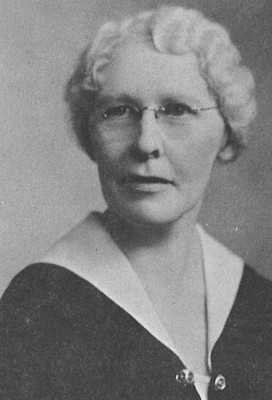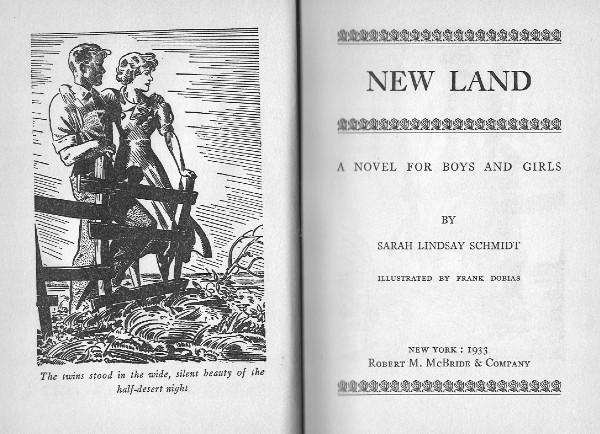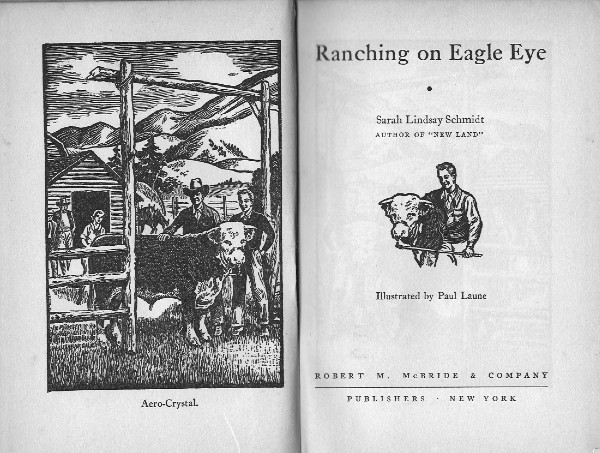What was the last book you received for Christmas? Many years ago my mother gave me a book of Sherlock Holmes stories at Christmas. I thought it was a great gift and it gave me hours of enjoyable reading.
I recently asked my daughter what my two grandsons (ages 14 and 12) wanted for Christmas and her response was books. I guess all the hours my wife and I spent reading to our two children paid off.
As an adult one of my Christmas traditions is to read a book written by James Oliver Curwood. I have read most of his books and find myself rereading them. Curwood was an action-adventure writer and conservationist who wrote books in the early 1900s. His books often involved Canadian Mounties, fur trappers, indigenous peoples, scoundrels, and typically a fair maiden. The settings were in the Hudson Bay area, the Yukon and Alaska. There was often a blizzard and extremely cold weather to get one in the winter spirit. His short stories and novels inspired at least 180 movies. His books were listed as books appropriate for agricultural education students in various listings of books for FFA libraries.
Another writer who had HER books listed as recommended reading for FFA members was Sarah Lindsay Schmidt. Her books were written in the 1930s and often focused on vocational agriculture and the Future Farmers of America. So who is she, how did she know such much about agricultural education, and what books did she write? Let’s find out.
Read this entire Footnote for YOUR Christmas book present.
Sarah Lindsay Schmidt
Sarah was born in 1877 in Chicago. Her father, David Lindsay, was a businessman and civic leader in Chicago. Many of his closest friends were professors at the University of Chicago. During her high school year Sarah became interested in writing short stories and won first place and a gold watch in a senior student writing contest.
After graduating from the University of Chicago Sarah became a full time writer, mostly of juvenile stories. After four years of freelance writing she became a reader and critic for a Chicago publisher.
After a while Sarah decided to become a high school English teacher in Sterling, Illinois. Here she met a science teacher and athletic coach. They were married in 1910. Both Sarah and her husband had a love for the soil and became real “dirt farmers” for a period of four years.
In 1914 Sarah and her husband returned to teaching, this time at the State Teacher’s College in Whitewater, Wisconsin. In 1919 Sarah and her husband moved to Ft. Collins Colorado and Sarah taught English at Colorado State University. She loved this work. It gave her the opportunity to arouse in students an appreciation of and a desire for good reading.
Sarah also taught an adult evening class in short story writing at Colorado State.

Figure 1. Sarah Lindsay Schmidt
In 1935 she left the university to devote full time to writing. She approached her writing with a new interest and fervor. She wrote six books of which five revolved around vocational education in agriculture. The vocational agriculture/Future Farmer books were:
- New Land (1933)
- Ranching on Eagle Eye (1936)
- The Secret of Silver Peak (1938)
- Shadow Over Winding Ranch (1940)
- This is My Heritage (1953)
A sixth book, The Hurricane Mystery (1943), was a mining story. Each book was a Junior Literary Guide selection and New Land was transcribed into Braille and also won a Newberry Award.
At the 1937 National FFA Convention Sarah was introduced to the FFA members in attendance.
In the files of Rufus Stimson, retired state supervisor in Massachusetts, I discovered a letter (dated February 10, 1946) that indicated Sarah Lindsay Schmidt was to be included in the “Honor Roll.” The HONOR ROLL was to be a book identifying and recognizing approximately 200 pioneers of agricultural education. However, Stimson died before completing the book. After years of searching I was able to recover the unpublished manuscript but there was no citation for Sarah. Apparently, whomever was responsible for writing it never did. I have digitized the Honor Roll if you want to peruse it. There are only two women in the Honor Roll, Sarah would have been the third.
There is more information about Sarah Lindsay Schmidt later in this Footnote.
Sarah’s Agricultural Education Books
New Land: The Morgan family (Father, 17 year old twins Charley and Sayre, and toddler Hitty) move to Wyoming from Chicago. They know nothing about agriculture but are looking for a new start on an irrigation project. They planned to live on a quasi-abandoned 80 acre homestead. The original homesteader, who had returned to Chicago, has told the Morgans they could take over the claim, but that was not exactly true. He just wanted them to make improvements and then he would reclaim it.
The high school had just started a vocational agriculture program. Sayre goes and visits the agriculture teacher to encourage him to recruit Charley into the program. The fact that Charley was a star halfback at his school in Chicago and the fact that the ag teacher was also the football coach didn’t hurt. However, Sayre has another reason for the visit. And we pick up the story (P. 43-44):
But Sayre was nerving herself to her next question. “That – that part-time agriculture class you’re going to start in November. Could a girl join it?”
The teacher stared at her in what was plainly astonishment. “Oh, I shouldn’t think so,” he said quickly. “At least, it’s never been done – never even been asked for.”
“But,” the girl put in eagerly, “there’s no rule against it?”
“Not that I ever heard. You see, the course has never been given here before. But my plan, the one I laid before the school board, didn’t take girls into consideration at all, I’m afraid!” And he laughed a little apologetically. “It never occurred to me that any girl would want to join the group. There’s too much physical labor involved, in the first place, in what we agricultural people call ‘projects.’ They are genuine farm enterprises on a big enough scale to be real business undertakings. The pupils will have to do practically all the work themselves: plowing, planting, cultivating, harvesting, and marketing or feeding, in a crops project like, say, five acres of field peas. Or all the care of the stock: breeding, rationing, marketing, raising the feed, and perhaps even providing quarters if necessary, in an animal project, like a dozen beef steers. You see, a lot of that sort of work would be much too hard for a girl!”
But even as she watched and listened, Sayre was conscious of a curious new look coming into Mr. Kitchell’s eyes – as if, almost, he were sizing her up, and wondering. . . . She leaned forward as he paused, her eager face with its big eyes, deep Celtic blue in color, radiant with self-confidence. “Please, I could try. Even if I’m not big. I’m strong, and I’m used to hard work. All my life I’ve wanted so much to live in the country and work out of doors!”
“Oh, I’m sure you would do your best,” he returned courteously. “Still, no girl I’ve ever heard of even thought of tackling such work.”
“But nowadays,” she broke in, “there isn’t anything a boy does that a girl can’t do. You know that!”
Charley enrolls in the all-day school and excels. However, Frank Hoskins, the son of the leading (but unethical) citizen in town, feels threatened by the new boy. Up until then Frank had been the big man on campus.
Sayre had successfully convinced the agriculture teacher to let her enroll in the part-time agriculture program. The Morgan twins launched head first into their farming projects and gave Frank stiff competition. A fertilizer spreader rebuilt by Charley is the talk of the town.
As the story progresses there is conflict on the football team, unjustified accusations about weevils in the alfalfa, stolen poultry, stock judging high jinks, and a deadly once in a century blizzard. But all’s well that ends well.
The FFA is never mentioned in the story, but the value and importance of agricultural education is amply demonstrated.

Figure 2. New Land
Ranching on Eagle Eye. The story opens with Zeb, his mother and younger sister leaving Denver during the height of the depression to live on the family homeplace (the Eagle Eye ranch in the Rockies) with his Granny, Uncle Will and Cousin Craig. Craig and Zeb are near the same age. Craig is an experienced cattleman and Zeb is a greenhorn but does have some agribusiness experience from working at the Denver stockyards.
Both Craig and Zeb take agriculture classes at the high school and are active in the FFA. After an unpleasant encounter with old man Shank, the local cattle buyer, Zeb begins to formulate plans for a better way for the FFA members to sell their cattle – and that is by forming a marketing cooperative.
However the conniving cattle buyer and his lazy son, who is also a FFA member, tries to blackball Zeb and prevent him from joining the FFA and thus quashing the FFA marketing cooperative plan. However, that plan is not successful. The mortgage on the ranch is obtained by Shank and he attempts to claim the cattle on the ranch and steal the Eagle Eye brand. There is a major blizzard after the Denver livestock show that wrecks a train carrying livestock from the Eagle Eye community. Later, Shank’s son gets lost in the mountains and is badly hurt but is found by Craig.
When Shank ships cattle from the Eagle Eye community he has bought, there is a strike at the Denver market and Shank can’t sell the cattle. However, this doesn’t affect the cattle from the FFA marketing cooperative because Zeb had lined up a buyer in advance for the FFA feeder calves. The calves are of high quality because of the teaching and influence of the agriculture teacher.
The message of the story is listen to the agriculture teacher and embrace new ideas.

Figure 3. Ranching on Eagle Eye
The Secret of Silver Peak. The main character in this novel is Cynthia Fulton, a 20 year old who just lost her grandfather. She is determined to continue to operate the Angora goat ranch in Colorado. But times are hard and there are debts to pay.
First, she has to fire Two Tooth Tomas, the goat herder because of his insolence and sloth. The fact that he doesn’t want to take orders from a female is also a factor. He vows to get revenge.
After goats mysteriously start to disappear, a decision is made to drive the goat herd to new grazing pastures up in the mountains. Cynthis enlists the aid of two college boys; Alaan, a lifelong neighbor and High Henry, his pal from the state school of mines to help. Tuck, Alaan’s younger brother also helps in the goat drive. Tuck is a FFA member and wants to get started raising Angora goats. Neil Fleming, the young vocational agriculture teacher from Texas also helps. Old Goaty, the reclusive miner, is also a character in the story.
During the goat drive a variety of things happen. The prize billy goat, Methuselah, disappears. There is evidence someone is working at an abandoned gold mine that belongs to the Fulton family. Goat meat is being sold to miners in mining camps in the area. Old Goaty is fatally injured but leaves a cryptic message.
While Alaan, Cynthia and Tuck take care of the goats, Henry is playing detective and exploring the area. All’s well that ends well. The mysteries are solved. Two Tooth Thomas is arrested. A hidden cache of gold is found that is used to pay off the debts. And Cynthia and Alaan become an item.

Figure 4. The Secret of Silver Peak
Shadow Over Winding Ranch -. The book starts with three siblings in a car on the way to a FFA public speaking contest where Neal, the younger brother of the trio, will participate. The book ends with David, the older brother, being recognized by the FFA as the Star Farmer of America. However, there was a lot of hard work, jealousy, and mysterious events in between the two events.

Figure 5. Shadow Over Winding Ranch
This is My Heritage – Before his death in World War II, Bill dreamed of making a haven of his dry land in Colorado for the miserable people he saw in Europe. Bill’s brother Scott, who had been the Star Farmer of Colorado, inherited the land and the dream. Dismayed at first by the desolation, Scott, helped by the county agent and a well driller, brings water to the land. However, in the process Scott has to overcome the discrimination and hatred of the neighbors who violently dislike “foreigners.”

Figure 6. This is My Heritage
How Did Sarah Lindsay Schmidt Know So Much About Agricultural Education and the FFA?
Earlier we learned that Sarah married a science teacher in 1910 and they farmed for a number of years. That science teacher was G. A. (Gustavus Adolphus) Schmidt. He was born in Germany and came to the United States as a child. He received a bachelor’s degree from the University of Illinois in 1903, received a master’s degree in general science and education from the University of Wisconsin in 1915 and earned a doctorate in Agricultural Education from Columbia University in 1932. In the early days of agricultural education Columbia University was a leading producer of doctoral degrees in vocational education.
G. A. Schmidt was an agricultural teacher educator at Colorado State from 1919 until 1945 when he retired. He was a prolific writer and was author or coauthor of eight books that focused on teaching methods, project method of teaching, curriculum development, adult education, and agricultural mechanics. He was a frequent contributor toThe Agricultural Education Magazine.
In a memorial booklet published upon the death of Sarah Lindsay Schmidt in 1965, we find “She also rendered invaluable service to her husband by editing his numerous books and articles. Without this help, he often stated, these would have received little recognition.”
Upon Sarah’s death in 1965 the national FFA made an attempt to collect all of Sarah’s books and also planned to write an article about her and her husband in The Future Farmer Magazine. G. A. Schmidt requested that he not be mentioned because “he would not want in any way to detract from any eulogy that might appear in her memory.”
Concluding Remarks and Your Christmas Gift
In an era when the FFA would not admit females to membership, it is somewhat ironic that one of the leading advocates for the FFA and agricultural education was a female. Sarah Lindsay Schmidt’s books were in most FFA libraries and were undoubtedly read by thousands of FFA members.
Her stories often featured a strong female character. And we learned from New Land, published in 1933, that females should be allowed to study agricultural education. Sarah was well ahead of her times.
While her books are out of print, one can occasionally find one in a used book store. Yesterday (December 8, 2022) 18 copies of her books were available through Abebooks ranging in price from $15 to $100. eBay has seven of her books listed. Amazon also lists several and the Kindle version of New Land can be downloaded for $3.99.
Fortunately, four of her books are available online and can be read or downloaded for free. So, if you want to see what FFA members were reading in the 1930’s check them out. This is my Christmas gift for you.
New Land – https://babel.hathitrust.org/cgi/pt?id=wu.89075322529&view=1up&seq=5 or https://digital.library.upenn.edu/women/schmidt/land/land.html
Shadow Over Winding Ranch – https://babel.hathitrust.org/cgi/pt?id=mdp.39076002271885&view=1up&seq=9
This is My Heritage – https://openlibrary.org/authors/OL2268482A/Sarah_Lindsay_Schmidt
The Hurricane Mystery = https://digital.library.upenn.edu/women/schmidt/hurricane/hurricane.html
Curators Note: This is the last Friday Footnote for 2022. Spend the next few weeks focusing on family and friends. The Footnotes will continue on January 6 as we resume our series of Footnotes focused on Reading Literacy.
